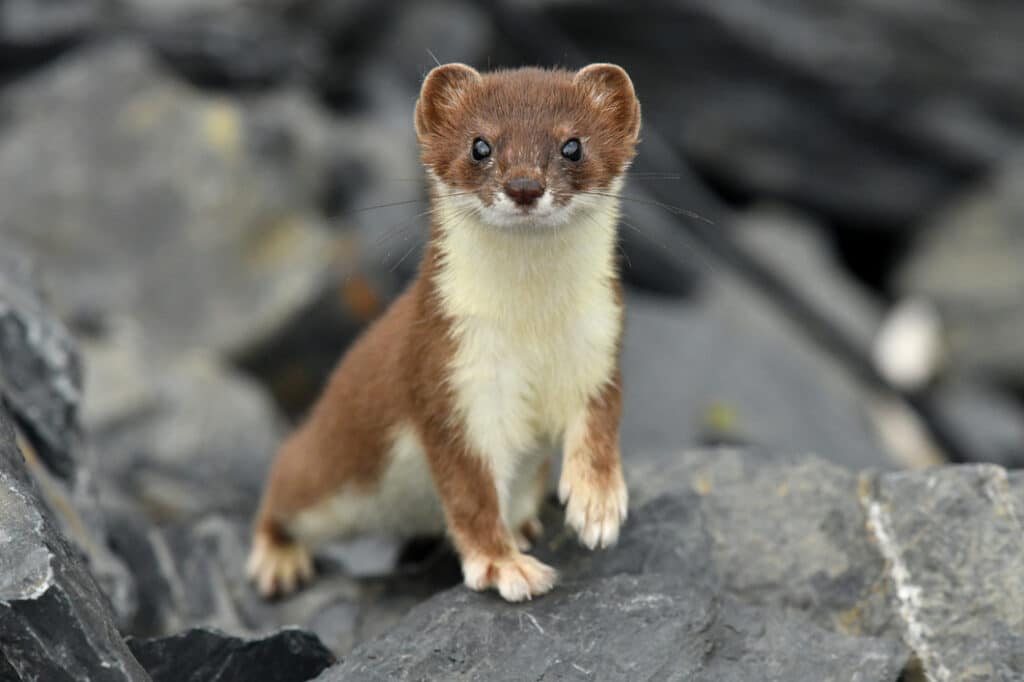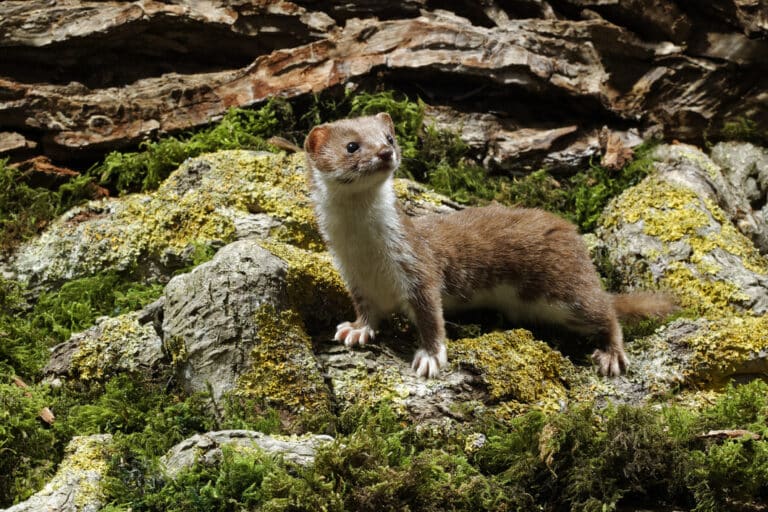European Weasel
Scientific name: Mustela nivalis
At a glance
- Weasels are widespread throughout Britain and are probably our most numerous carnivore.
- They have virtually no legal protection and many are killed in traps by gamekeepers every year.
- Shooting probably ‘loses’ more pheasants every year to collisions with cars than they do to Weasels.

One of a large worldwide group of around seventy short-legged, long bodied, carnivorous mammals that include Otters, Badgers, Polecats, and Martens, at a maximum length of just 25cm (including its tail) the European Weasel is the smallest mustelid in the UK.
With an estimated UK population of 450,000, Weasels are widespread throughout Britain (though absent from Ireland and most offshore islands), making them probably our most numerous carnivore. They are found in a wide range of habitats including urban areas, lowland pasture, woodland, marshes and moors. Relentlessly active, Weasels have high metabolisms and need to eat around a third of their own body weight every day so are less common at higher altitudes and in dense woodland with sparse ground cover where their prey are scarce.
That prey is very varied, but Weasels specialise in hunting small rodents like mice and voles. Their small size allows them to search through rodent tunnels and burrows. Additional prey includes birds, eggs and even young rabbits which may be taken if their preferred rodents are scarce.
Sadly, Weasels have always been considered as ‘pests’ by gamekeepers and shooting estates, largely because they may take a few pheasant and partridge chicks. Shooting has such a disproportionate grip on the legislation that protects our wildlife, that Weasels still don’t have proper protection beyond vague (and unenforceable given how gamekeepers operate) welfare codes or practice. Huge numbers are trapped and killed every year (no-one knows how many as estates are not required to keep totals), but while Weasels do kill some chicks, it’s probably very few, and trapping probably has no long term effect, Weasel populations are resilient and like many small mammals they naturally suffer high mortality. Weasels are also extremely good at recolonising abandoned – or trapped out – areas when conditions improve.
Shooting probably ‘loses’ more of the 50 million pheasants they release every year to collisions with cars than they do to Weasels.

Did I see a stoat or a weasel?
Putting aside the old joke about ‘Weasels being ‘weasely’ recognised because Stoats are ‘stoatally’ different’ the clearest way to quickly differentiate between the larger Stoat and its smaller relative is to look at its tail: a Stoat’s tail is proportionately longer (around half the length of its body) and ends in a conspicuous black tip, while a Weasel’s tail is short and stubby and entirely brown. Fur colour is a less reliable indicator: in winter some Stoats (particularly in mountainous areas) may turn white while Weasels are brown all year, but in most regions of the UK they don’t.
